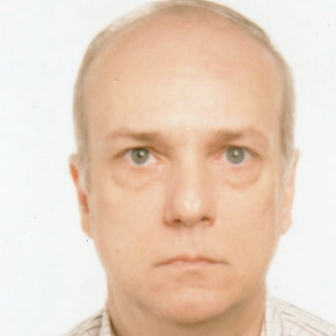The Quantum Vacuum
A special issue of Physics (ISSN 2624-8174). This special issue belongs to the section "High Energy Physics".
Deadline for manuscript submissions: closed (31 December 2019) | Viewed by 45842
Special Issue Editors
Interests: casimir physics; quantum electrodynamics; quantum fluctuations; radiative processes in static and dynamical structured environments; quantum field theory in accelerated frames and in a curved space-time; quantum optomechanics; resonances and dressed unstable states; microscopic origin of time asymmetry in quantum physics; cosmological axions and dark matter; axion electrodynamics
Special Issues, Collections and Topics in MDPI journals
Interests: quantum electrodynamics, casimir and casimir-Polder effects; quantum fluctuations; quantum field theory in accelerated frames and in a curved space-time; non-Hermitian Hamiltonians in quantum mechanics
Interests: quantum electrodynamics; vacuum magnetic birefringence; experimental casimir physics; vacuum fluctuations; axions searches; dark matter direct detection; experimental gravity
Special Issue Information
Dear Colleagues,
In quantum field theory, the vacuum state has highly nontrivial features. Field fluctuations and related field energy densities exist even in the absence of real quanta of the field. The existence of these field fluctuations has many observable effects, such as the Lamb shift, the anomalous magnetic moment of elementary particles, the atom-surface Casimir–Polder force, and the Casimir effect. Also, the structure and the dynamic properties of the quantum vacuum depend on the system considered: vacuum field fluctuations can be modified by the presence of matter and external fields and, in turn, they can influence the physical properties of matter, leading to striking observable effects. In quantum electrodynamics they yield, among other effects, the Casimir force, the Casimir–Polder interaction between neutral polarizable objects, and the birefringence of the vacuum. While the latter has not yet been observed in a laboratory, the former two effects have been verified in remarkable experiments. The Casimir force, for instance, has been measured in different configurations, and its dependence on the geometry and magnetodielectric properties of the bodies involved has also been investigated, showing good agreement between theory and experiments. The vacuum of quantum chromodynamics also has highly nontrivial features, possibly related to the confinement of quarks. All these effects strongly depend on the boundary conditions, as well as on the non-adiabatic motion of the boundaries (the dynamic Casimir effect) or the uniformly accelerated motion of the observer (the Unruh effect). Field fluctuations are also supposed to be a source term for the gravitational field, and it has been suggested that they are part of the dark energy of the universe.
List of potential topics to be covered:
- The vacuum of quantum electrodynamics and quantum chromodynamics.
- Vacuum field fluctuations and energy densities.
- Quantum field theory with external boundary conditions.
- Casimir and Casimir–Polder effects, in equilibrium and nonequilibrium conditions.
- Measurements of the Casimir and Casimir–Polder forces.
- Dynamic Casimir and Casimir–Polder effect.
- Quantum friction.
- Theory and experimental tests of the vacuum magnetic birefringence.
- Bag model of hadrons.
- Quark-gluon plasma.
- The Fulling–Davies–Unruh effect. Quantum field theory in accelerated frames and in a curved spacetime.
- The Hawking–Bekenstein radiation and the Unruh effect in analogue systems.
- Black hole thermodynamics.
- Gravitational effects of vacuum energy, dark energy and dark matter.
Prof. Roberto Passante
Prof. Giuseppe Ruoso
Prof. Salvatore Spagnolo
Guest Editor
Manuscript Submission Information
Manuscripts should be submitted online at www.mdpi.com by registering and logging in to this website. Once you are registered, click here to go to the submission form. Manuscripts can be submitted until the deadline. All submissions that pass pre-check are peer-reviewed. Accepted papers will be published continuously in the journal (as soon as accepted) and will be listed together on the special issue website. Research articles, review articles as well as short communications are invited. For planned papers, a title and short abstract (about 100 words) can be sent to the Editorial Office for announcement on this website.
Submitted manuscripts should not have been published previously, nor be under consideration for publication elsewhere (except conference proceedings papers). All manuscripts are thoroughly refereed through a single-blind peer-review process. A guide for authors and other relevant information for submission of manuscripts is available on the Instructions for Authors page. Physics is an international peer-reviewed open access quarterly journal published by MDPI.
Please visit the Instructions for Authors page before submitting a manuscript. The Article Processing Charge (APC) for publication in this open access journal is 1400 CHF (Swiss Francs). Submitted papers should be well formatted and use good English. Authors may use MDPI's English editing service prior to publication or during author revisions.
Articles with original results are most welcome, as are contributions of a review type of earlier publications or widely extended versions of the latter completed with new results and/or extensively updated.







